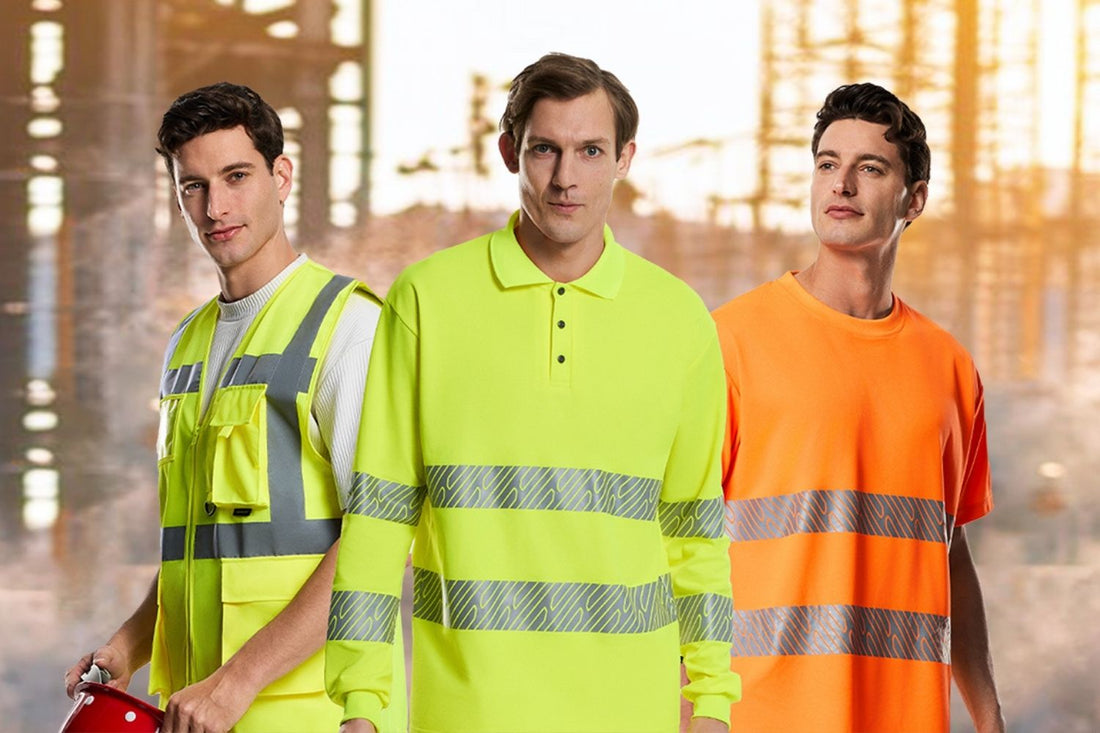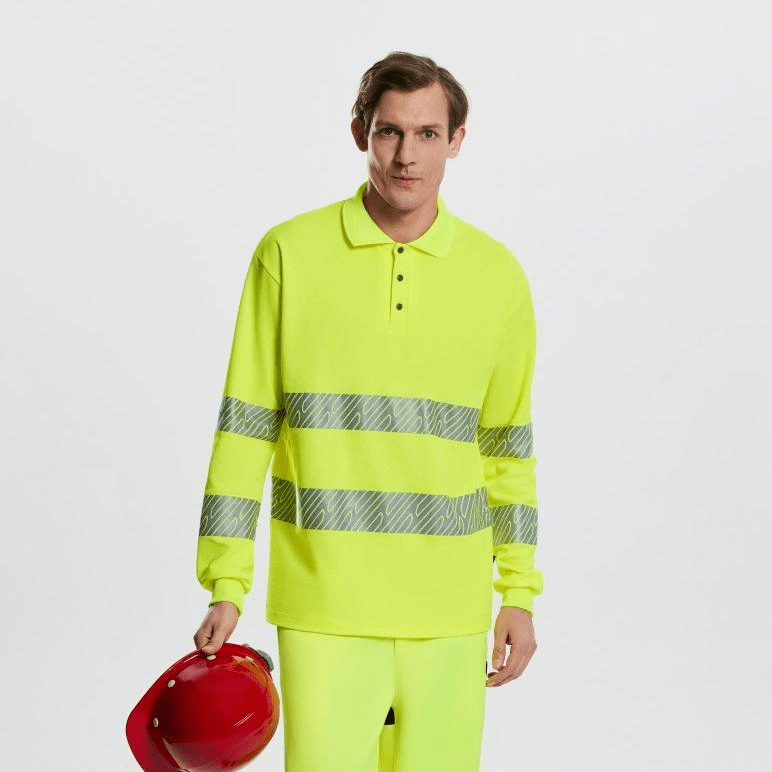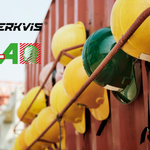
Hi-Vis Polo Shirts vs. Hi-Vis T-Shirts: Choosing the Right Safety Workwear
Choosing between hi-vis polo shirts and T-shirts? This comprehensive guide compares comfort, durability, compliance, and cost—helping you find the best option for your work environment and role.
23 May 2025
Share
Table of Contents
- Introduction to High-Visibility Workwear
- Key Differences Between Hi-Vis Polos and T-Shirts
- Advantages of Hi-Vis Polo Shirts
- Benefits of Hi-Vis T-Shirts
- Industry-Specific Recommendations
- Material and Comfort Considerations
- Safety Standards and Compliance
- Cost and Maintenance Factors
- Emerging Technologies in Hi-Vis Workwear
Making the Right Choice for Your Needs
Introduction to High-Visibility Workwear
In today's industrial and construction environments, high-visibility (Hi-Vis) clothing has become an essential component of workplace safety. These garments are specifically designed to make workers more visible in hazardous conditions, particularly in low-light environments or areas with moving vehicles and equipment. While safety vests are the most common form of Hi-Vis apparel, many workers are now opting for more comfortable and professional-looking alternatives like Hi-Vis polo shirts and T-shirts.
The choice between a Hi-Vis polo shirt and a Hi-Vis T-shirt isn't always straightforward. Each option offers distinct advantages depending on the work environment, job requirements, and personal preferences. This comprehensive guide will explore all aspects of both garments to help you make an informed decision that balances safety, comfort, and professionalism.
Key Differences Between Hi-Vis Polos and T-Shirts
Understanding the fundamental differences between these two styles of safety apparel is crucial for making the right selection:
Design and Appearance:
Hi-Vis polo shirts feature a collared design with a buttoned placket, giving them a more professional appearance. This makes them particularly suitable for supervisory personnel or workers who interact with clients. The structured design maintains a neat appearance throughout the workday.
Hi-Vis T-shirts, on the other hand, have a simple crew neck or V-neck design that prioritizes comfort and ease of movement. The more casual appearance makes them ideal for workers engaged in physically demanding tasks where formality isn't a concern.
Material Composition:
Polo shirts typically use a polyester-cotton blend (usually 65/35 or 50/50) that offers durability and maintains its shape after multiple washes. Some premium versions incorporate moisture-wicking technology for improved comfort.
T-shirts often use 100% cotton or lightweight polyester fabrics that maximize breathability. Advanced versions may include special weaves or mesh panels to enhance airflow in hot working conditions.
Visibility Features:
Both styles incorporate fluorescent background materials (typically yellow or orange) and retroreflective tape. However, polo shirts often place the reflective strips along the collar and placket for better visibility from various angles, while T-shirts usually feature standard horizontal bands.
Advantages of Hi-Vis Polo Shirts
Professional Image Maintenance:
For site managers, safety officers, or client-facing personnel, polo shirts project a more authoritative and professional image. The collared design helps maintain a polished appearance even in rugged work environments.
Versatility Across Seasons:
The slightly heavier fabric of polo shirts makes them suitable for year-round wear. In cooler weather, they can be layered under jackets or vests without compromising comfort or visibility.
Enhanced Durability:
The reinforced stitching at stress points (shoulders, placket, and collar) ensures longer garment life. Many models feature colorfast materials that maintain their high-visibility properties even after numerous wash cycles.
Regulatory Compliance:
Premium polo shirts often exceed minimum safety standards, offering wider reflective strips and brighter fluorescent materials that ensure compliance with strict workplace safety regulations.
Benefits of Hi-Vis T-Shirts
Superior Comfort in Heat:
The lightweight construction and breathable fabrics make T-shirts the preferred choice for summer work or in hot industrial environments like foundries or boiler rooms.
Unrestricted Movement:
Without collars or buttons, T-shirts allow complete freedom of movement for tasks requiring extensive arm motion or frequent bending and stooping.
Economic Advantages:
The simpler construction makes T-shirts more affordable, particularly when purchasing in bulk for large crews. Many companies opt for T-shirts as standard issue for general laborers.
Easy Maintenance:
T-shirts typically require less care than polo shirts - they can be washed at higher temperatures and don't need special attention to collars or plackets during laundering.
Industry-Specific Recommendations
Construction:
Most construction workers prefer T-shirts for their comfort during physical labor. However, site supervisors and engineers often choose polo shirts for their professional appearance during client meetings or inspections.
Roadwork:
Polo shirts are gaining popularity among traffic control personnel as they maintain visibility while presenting a more authoritative image to motorists.
Warehousing:
T-shirts dominate in warehouse environments due to their comfort during extended shifts of lifting and moving goods.
Airport Ground Crews:
Many airports mandate polo shirts for ground staff as they project a more uniformed, professional appearance to passengers.
Municipal Workers:
Sanitation and public works departments often provide T-shirts for field workers but issue polo shirts for supervisory staff.
Material and Comfort Considerations
Moisture Management:
Modern Hi-Vis fabrics incorporate advanced moisture-wicking technologies that pull sweat away from the body. This is particularly important in polo shirts where the collar could become uncomfortable if damp.
UV Protection:
Many premium Hi-Vis garments now include UPF 50+ sun protection, a crucial feature for outdoor workers exposed to sunlight for extended periods.
Stretch Fabrics:
Some manufacturers are introducing stretchable Hi-Vis materials that move with the worker while maintaining visibility requirements.
Anti-Microbial Treatments:
Especially valuable for T-shirts worn in hot conditions, these treatments reduce odor-causing bacteria for improved wearability.
Safety Standards and Compliance
EN ISO 20471: The European Benchmark for Hi-Vis Workwear
For businesses operating in the European Union, EN ISO 20471 is the definitive standard for high-visibility workwear. This regulation classifies garments into three classes—Class 1, 2, and 3—based on the amount of fluorescent background fabric and retroreflective tape. The higher the class, the greater the visibility protection. For example, hi-vis T-shirts typically meet Class 1 or 2 requirements, while hi-vis polo shirts and jackets often qualify for Class 2 or 3, offering enhanced visibility in high-risk environments such as roadworks or construction sites.
Ensuring Long-Term Compliance
Compliance doesn't end with the purchase. Regular inspection of hi-vis garments for color fading, dirt buildup, or worn-out reflective tape is essential. Improper washing techniques or extended exposure to sunlight can degrade the visibility performance. To maintain full compliance with EN ISO 20471, employers should implement routine checks and timely replacements, ensuring that workers remain visible and protected at all times.
Cost and Maintenance Factors
Initial Investment:
Hi-Vis polo shirts typically cost 20-40% more than T-shirts due to their more complex construction. However, their longer lifespan may offset this premium over time.
Replacement Costs:
T-shirts generally need replacement more frequently, especially in abrasive work environments. Polo shirts often last 30-50% longer with proper care.
Laundering Requirements:
Polo shirts may require cooler wash temperatures and air drying to maintain collar shape and button integrity. T-shirts can typically withstand more aggressive washing.
Customization Expenses:
Both styles can be embroidered or printed with company logos, though polo shirts often present a more professional appearance when branded.
Emerging Technologies in Hi-Vis Workwear
Smart Fabrics:
New developments include:
- Phase-change materials that regulate body temperature
- Photoluminescent strips that charge in daylight and glow at night
- Integrated sensors for monitoring vital signs or environmental hazards
Improved Visibility Solutions:
- LED-embedded fabrics with programmable lighting patterns
- Retroreflective inks that can be printed in intricate designs
- 360-degree visibility systems with strategically placed reflective elements
Sustainability Initiatives:
- Recycled polyester fabrics made from plastic bottles
- Biodegradable fluorescent materials
- Waterless dyeing processes to reduce environmental impact
Making the Right Choice for Your Needs
When deciding between Hi-Vis polo shirts and T-shirts, consider these key factors:
- Work Environment: Hot conditions favor T-shirts; more formal settings suggest polos
- Job Requirements: Physical labor leans toward T-shirts; supervisory roles toward polos
- Durability Needs: Long-term wear justifies polo investment; seasonal work may suit T-shirts
- Budget Constraints: Large teams may prefer T-shirts; smaller groups might opt for polos
- Company Image: Client-facing positions benefit from polo professionalism
Many organizations find value in maintaining both options, issuing T-shirts for general labor while providing polos for management and customer interactions.
Final Recommendations
For most industrial and construction applications:
- Choose Hi-Vis T-shirts for frontline workers in hot, physically demanding environments
- Select Hi-Vis polo shirts for supervisors, safety personnel, and client-facing staff
Always verify that garments meet the appropriate safety standards for your region and industry. Consider ordering samples of both styles to evaluate comfort and visibility in your specific work conditions before making bulk purchases.
Remember that proper fit is crucial for both safety and comfort - neither style should be too tight or excessively loose. Regular inspection and replacement of faded or damaged garments ensures ongoing protection for your workforce.
By carefully weighing all these factors, you can implement a Hi-Vis apparel program that maximizes both safety and worker satisfaction while meeting your organizational needs and budget requirements.
Prev post

Hi-Vis Workwear in Road Construction: What Really Matters
Updated on 30 May 2025
Next post

2025 Guide: What Materials Are Hi-Vis Workwear Made From?
Updated on 16 May 2025









